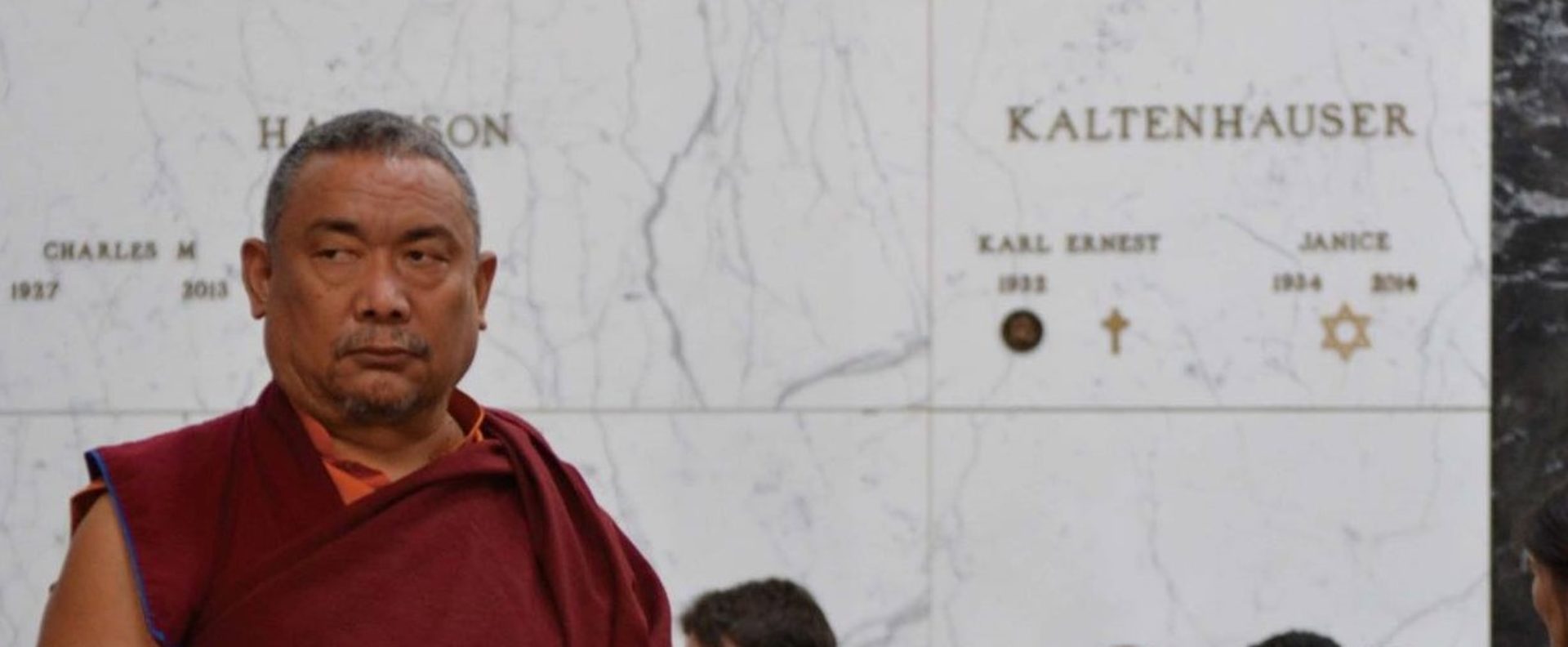
Born: 1965
Name in Chinese: 財旺札西 (cáiwàng zháxī)
Also known as: Nenang Lama
Roles:
Tsewang Tashi is a Tibetan businessman and cleric based in New York. He has been a resident in the U.S. since 2000, having left Tibet under extraordinary circumstances. He presides over the Danang Foundation, a U.S. 501(c)(3) tax-exempt charitable organisation ministering to the U.S. metropolitan East Coast’s substantial community of overseas Chinese Buddhist devotees.
The New York metropolitan area contains the largest ethnic Chinese population outside Asia. It is the primary destination for new Chinese immigrants. After the City of New York itself, the boroughs of Queens and Brooklyn encompass the largest Chinese populations of all U.S. municipalities. Queens is home to nearly a quarter of a million Chinese, with a population density of over 2,000 Chinese per square mile, making up over a tenth of the whole area’s population. Flushing Chinatown, in the North of Queens, houses over 30,000 individuals born in China alone, the largest Chinatown by this metric outside Asia and one of the largest Chinatowns in the world. It has been noted by CCNS, a U.S. national security watchdog organisation, that “Chinatown communities in Manhattan and Flushing, New York have been controlled by the Chinese Communist Party (CCP) for decades” and that “associations affiliated with the CCP often disguise themselves as ordinary NGOs.”
It is in Flushing where Danang Foundation is based, with two properties: a headquarters for the foundation’s operations, and a separate “Tibetan Buddhist Centre” both housed in high-rise blocks. The Danang Foundation, established in 2006, has hosted visits of many prominent Tibetan and Han Buddhist personalities, even including the Dalai Lama in 2014. Other notable figures include Tai Situ (during his first overseas trip following India lifting his travel ban in 2015), Karmapa Ogyen Trinley Dorje, and Hai Tao. The Danang Foundation’s website is in Chinese language and its events are marketed “primarily for Chinese Buddhists”. Ostensibly engaged in the Tibetan cause, Tsewang’s past and his connections with the Chinese authorities reveal a more complex picture.
In 1982 the 10th Panchen Lama Choekyi Gyaltsen was politically rehabilitated and allowed to travel to Tibet. The book “Forbidden Freedoms, Beiging’s Control of Religion in Tibet” published by the International Campaign for Tibet sets out how in 1985, three of China’s “New Buddhist Colleges” (Nechung, Kumbum and Labrang Tashikyil) were opened by the Panchen Lama. These institutions were established under the auspices of the State Administration for Religious Affairs (SARA) and control of the state-run Buddhist Association of China in full compliance with the PRC’s 1982 policy statement “…to create a contingent of young religious personnel who in terms of politics, fervently love their homeland and support the Party’s leadership and the socialist system and who possess sufficient religious knowledge.” In 1987, long before its model was successfully replicated, an official described Nechung as “Tibet’s only institution for training the chief monks that will lead Tibet’s Buddhist faithful”. Nechung School’s curriculum competed with traditional monastic programs by specifically training clerics to become teachers in other monasteries, and a liaison between the Chinese government and the Tibetan people.
At age 18, Tsewang was accepted among the first group of students at Nechung College. Having graduated, he was then assigned by SARA to Tsurphu Monastery, the ancestral seat of Tibet’s Karmapa lamas, to monitor the work of the Tibetan monk, Drupon Dechen. Dechen had returned to Tibet from exile in the early 1980s in the time of Hu Yaobang’s period of reform, with the goal of rebuilding Tsurphu which had been destroyed in the Cultural Revolution. Tsewang was later installed by SARA in Nenang, a monastery historically associated with the line of Pawo incarnations, near to Tsurphu. During this time he was also engaged in various business enterprises inside Tibet, including a travel agency.
In 1992, during a period of intense crackdown and pressure in Tibet by the Chinese authorities, Tsewang was permitted to travel to Hong Kong, Malaysia and Taiwan to raise funds at the behest of a senior overseas Tibetan abbot Thrangu Rinpoche, and with the blessing of the Chinese authorities. Tsewang's reliability, skills and tact, combined with the contacts he was able to develop and nurture overseas, placed him in an ideal position to undertake the key role he played in the exfiltration of Karmapa Ogyen Trinley Dorje into India at the end of 1999. It should be noted that during this time (at the very least), his SARA accreditation denoted the fact that Tsewang was definitely a controlled religious civil servant.
In 2017, prior to Karmapa Ogyen Trinley Dorje’s arrival in North America, Tsewang gave an interview to the New York-based Chinese-language news website Mingjing News. The topics of discussion ranged from his relationship with Ogyen Trinley Dorje to the circumstances of their arrival in India. Tsewang insisted that they “used as modes of transportation cars, horses, and helicopter, and this came without support from the American CIA, the exile Tibetan government, or the Chinese government”, adding that the helicopter was “rented under their private names”.
Furthermore, Tsewang explained that in July 2000 the Indian government gave him, together with Ogyen Trinley Dorje and the other four “escapees” refugee cards and exit passports. Tsewang then travelled to Taiwan, Malaysia and Singapore, but when returned to India he was arrested at the airport and prevented from re-entering, because the Indian Foreign Ministry suspected he was working for the Chinese government. He was held in custody for five days before being given the option to return either to Taiwan or China. He chose Taiwan. Two months later, Tsewang explained, it was the Dalai Lama who intervened to arrange for the U.S. State Department to issue him a visa. Seventeen years later when Ogyen Trinley Dorje permanently fled from India, it was “most loyal” Tsewang to whom he turned for support in procuring new citizenship of Dominica, a Caribbean micro-state under the decisive influence of China.